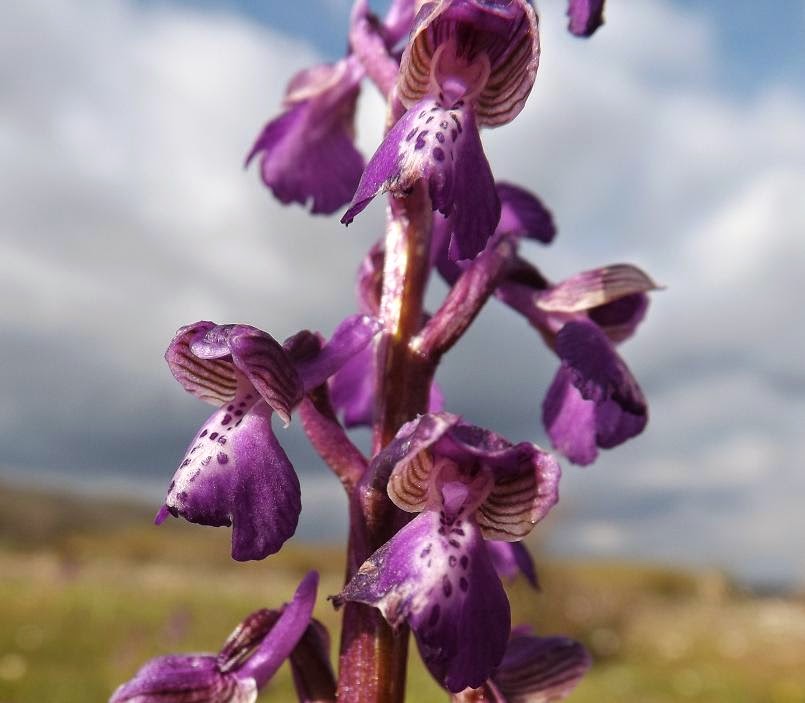Description and photos of the lady
orchid (Orchis purpurea).
Marius van Heiningen
Personal introduction.
The usual way of
most plant books to describe a species is by means of a picture of the flower and a
description of the details, which is understandable because colour photos are
expensive. On internet a lot of websites follow the same patron, which is less
understandable because the capacity of blogs and webs is actually quite big
(for instance, the capacity of a “blogspot-blog” is 5 Gb). When flower hunting
in the field, an accurate description of the details is very welcome, because you
can check them right at the spot, with the book in your hand. But when searching
on the web for more information I would like to find detailed descriptions with
lots of photos. For this reason I´ll try to write my posts showing the characteristics
in various photos. I hope this way the information will be of use to the
reader.
Introduction.
The lady orchid
or Orchis purpurea is a conspicuous orchid, both due to the height of the
flowering stalks (25 – 100 cm) and the dense inflorescence with lots of
purple-white flowers. It even may be too conspicuous, because it makes them
prone to flower picking. It is a perennial plant who´s leaves appear above ground
in the winter, normally in January or February. These more or less lanceolate
leaves, this is with a rounded base tapering towards the apex, are relatively
big and parallel-nerved (like all orchids). In the Cantabrian Mountains
flowering takes places during April and May. The flower has a spur without
nectar, so it is a food-deceptive orchid, but they produce a sweet odour and
are pollinated by bumblebees or butterflies.
In the southern
Cantabrian Mountains this orchid is not very common, but I have been able to
locate several groups of about 30 – 40 of adult orchids with inflorescences and
much more scattered exemplars have been found alone or in small groups. Most
grow in full sunlight, others grow between (evergreen) oaks or even in poplar
plantations, but none has been found in heavily shaded forests.
Photo 1 shows
the general robust aspect of Orchis purpurea, the lady orchid, with long and
broad leaves and a thick spike with a dense inflorescence, which may have up to
a hundred flowers or more. They grow on calcareous soil, often in full sun but
also in partly shadowed habitats.
READ FURTHER AND ENJOY THE PHOTOS














